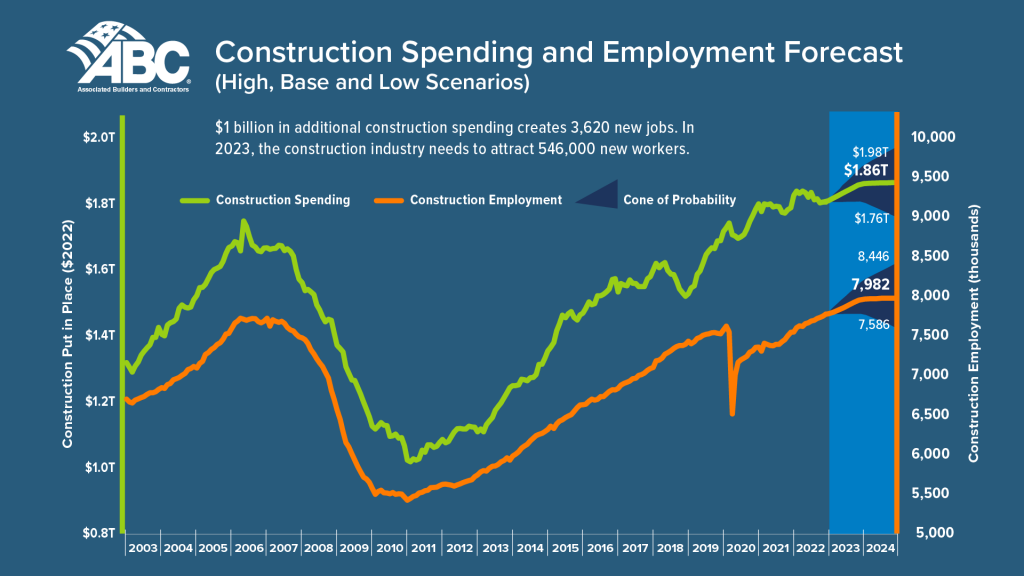
Can A Culture of Safety Be a Competitive Advantage?
The construction industry needs to attract an estimated 546,000 additional workers on top of the normal pace of hiring in 2023 to meet the demand for labor, according to a proprietary model developed by the Associated Builders and Contractors (ABC).
Can a culture of safety be a competitive advantage when it comes to filling positions?
According to the ABC, the construction industry averaged more than 390,000 job openings per month in 2022, the highest level on record, and the industry unemployment rate of 4.6% in 2022 was the second lowest on record, higher than only the 4.5% unemployment rate observed in 2019. National payroll construction employment was 231,000 higher in December 2022 than in December 2021.
The bulk of the current workforce is over 40 years old, with a large segment of that group who are over 53 years old. Many of these workers are close to or considering retirement. And the pipeline of new workers is not adequate to fill all the open positions.
Causes of the Construction Labor Shortage
Since 2020, the industry has only recovered 67% of the jobs lost. What is the cause of this labor shortage?
Several factors coming together at the same time are affecting the current construction labor shortage, including:
- The Great Resignation: The pandemic and factors in the construction industry have caused people to reevaluate their priorities. The construction industry has become less appealing in recent years.
- Aging Workforce: Baby boomers are retiring, and younger workers are showing less interest in the construction industry.
- Competitive Wages in Other Industries: The construction industry wages have not kept up with wage increases and they have not kept pace with inflation.
- Fewer Immigrants: Because of COVID-era restrictions, difficulties with immigration, and inability to afford travel, fewer migrant workers are available to fill positions. (1)
Here is a chart from ABC showing how construction spending affects the labor
shortage with projections into 2023 to 2024

Promote a Culture of Safety for Current and New Employees
Proponents mention many ways to manage and/or overcome the labor shortage, like looking for more diverse workers, emphasizing training, and developing apprenticeship programs.
But few are talking about safety as a competitive advantage. A safe working environment is important for maintaining your current work force, but might just be the differentiator when it comes to recruiting.
When there is a labor shortage, employees are in a stronger position to call the shots when it comes to where they want to work.
And since OSHA violations are public knowledge, employees can and should do greater due diligence when deciding where to work. Employers who have been cited have to pay huge fines, delay projects and face lower morale and higher turnover.
Employees who embrace a culture of safety know that companies who operate from this mindset have less turnaround, show care for their employees which leads to higher morale, and face fewer work stoppages and regulatory citations and fines. Employers who engage workers in job site safety measures ensure the buy-in of the entire team, which makes workers feel more appreciated and engaged.
The competition for skilled labor is not going away. In this tight labor market, every little competitive advantage can make a difference.
Compliance Consultants, Inc. has helped many organizations create a culture of safety and has provided guidance and training along the way.
Contact us today to get started.
https://ccicomply.com/contact-us/
Resources:



